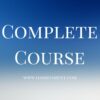Description
FIN 515 Business Valuation and Stock Valuation – Exam
1. (TCO A) Which of the following statements is CORRECT?
2. (TCO G) Which of the following statements is CORRECT?
3. (TCO G) LeCompte Corp. has $312,900 of assets, and it uses only common equity capital (zero debt). Its sales for the last year were $620,000, and its net income after taxes was $24,655. Stockholders recently voted in a new management team that has promised to lower costs and get the return on equity up to 15%. What profit margin would LeCompte need in order to achieve the 15% ROE, holding everything else constant?
4. (TCO B) You want to buy a new sports car three years from now, and you plan to save $4,200 per year, beginning one year from today. You will deposit your savings in an account that pays 5.2% interest. How much will you have just after you make the third deposit, three years from now?
5. (TCO B) You sold a car and accepted a note with the following cash flow stream as your payment. What was the effective price you received for the car assuming an interest rate of 6.0%?
Years: 0 1 2 3 4
|———–|————–|————–|————–|
CFs: $0 $1,000 $2,000 $2,000 $2,000
6. (TCO B) Suppose you borrowed $14,000 at a rate of 10.0% and must repay it in five equal installments at the end of each of the next five years. How much interest would you have to pay in the first year?
7. (TCO D) A 15-year bond with a face value of $1,000 currently sells for $850. Which of the following statements is CORRECT?
8. (TCO D) Garvin Enterprises’ bonds currently sell for $1,150. They have a six-year maturity, an annual coupon of $85, and a par value of $1,000. What is their current yield?
9. (TCO C) Niendorf Corporation’s five-year bonds yield 6.75%, and five-year T-bonds yield 4.80%. The real risk-free rate is r* = 2.75%, the inflation premium for five-year bonds is IP = 1.65%, the default risk premium for Niendorf’s bonds is DRP = 1.20% versus zero for T-bonds, and the maturity risk premium for all bonds is found with the formula MRP = (t – 1) x 0.1%, where t = number of years to maturity. What is the liquidity premium (LP) on Niendorf’s bonds?
10. 10. (TCO C) Assume that to cool off the economy and decrease expectations for inflation, the Federal Reserve tightened the money supply, causing an increase in the risk-free rate, rRF. Investors also became concerned that the Fed’s actions would lead to a recession, and that led to an increase in the market risk premium, (rM – rRF). Under these conditions, with other things held constant, which of the following statements is most correct?
FIN 515 Business Valuation and Stock Valuation – Exam
1.(TCO A) Which of the following statements is CORRECT?
2.(TCO G) Smith & Constantine Inc. recently announced that their net income increased sharply from the previous year, yet their net cash flow from operations declined. Which of the following could explain this performance?
3. (TCO G) Lucky Corp. has $312,900 of assets, and it uses only common equity capital (zero debt). Its sales for the last year were $620,000, and its net income after taxes was $24,655. Stockholders recently voted in a new management team that has promised to lower costs and get the return on equity up to 15%. What profit margin would Lucky Corp. need in order to achieve the 15% ROE, holding everything else constant?
4. (TCO B) Suppose a state of Delaware bond will pay $1,000 10 years from now. If the going interest rate on these 10-year bonds is 5.5%, how much is the bond worth today?
5. (TCO B) Your father paid $10,000 (CF at t = 0) for an investment that promises to pay $750 at the end of each of the next five years, then an additional lump sum payment of $10,000 at the end of the fifth year. What is the expected rate of return on this investment?
6. (TCO B) Suppose you borrowed $14,000 at a rate of 10.0% and must repay it in five equal installments at the end of each of the next five years. How much interest would you have to pay in the first year?
7. (TCO D) A 15-year bond with a face value of $1,000 currently sells for $850. Which of the following statements is CORRECT?
8. (TCO D) Garvin Enterprises’ bonds currently sell for $1,150. They have a six-year maturity, an annual coupon of $85, and a par value of $1,000. What is their current yield?
9. (TCO C) 5-year Treasury bonds yield 5.5%. The inflation premium (IP) is 1.9%, and the maturity risk premium (MRP) on five-year bonds is 0.4%. What is the real risk-free rate, r*?
10. (TCO C) Assume that to cool off the economy and decrease expectations for inflation, the Federal Reserve tightened the money supply, causing an increase in the risk-free rate, rRF. Investors also became concerned that the Fed’s actions would lead to a recession, and that led to an increase in the market risk premium, (rM – rRF). Under these conditions, with other things held constant, which of the following statements is most correct?
FIN 515 Midterm Exam
1. (TCO G) Which of the following statements is correct?
2. (TCO D) Which one of the following statements is most correct?
3. What’s the future value of $1,500 after 5 years if the appropriate interest rate is 12%, compounded monthly?
4. (TCO B) You deposit $1,000 today in a savings account that pays 4.0% interest, compounded annually. How much will your account be worth at the end of 25 years?
5. (TCO B) You are interested in saving money for your first house. Your plan is to make regular deposits into a brokerage account which will earn 14 percent. Your first deposit of $5,000 will be made today (January 1st). You also plan to make four additional deposits at the beginning of each of the next four years. Your plan is to increase your deposits by 10 percent a year. (that is your plan is to deposit $5,500 at t+1, and $6,050 at t+2, etc.) How much money will be in your account after five years?
6. (TCO A) Which of the following statements is correct.
7. (TCO A) Other things held constant, which of the following alternatives would increase a company’s cash flow for the current year?
8. (TCO C) Which of the following statements is correct? (Assume that the risk-free rate is a constant)
9. (TCO C) JBS Inc. recently reported net income of $4,750 and depreciation of $885. How much was its net cash flow, assuming it had no amortization expense and sold none of its fixed assets?
10. (TCO C) You read in the Wall Street Journal that 30-day US Treasury Bills are currently yielding 8%. Your brother-in-law, a broker, a broker at Kyoto Securities, has given you the following estimates of current interest rate premiums:
FIN 515 Midterm Exam
1. (TCO D) Which of the following statements is correct?
2. (TCO D) Which one of the following statements is most correct
3. (TCO B) What’s the future value of $1,500 after 5 years if the appropriate interest rate is 12%, compounded monthly?
4. (TCO B) You deposit $1,000 today in a savings account that pays 4.0% interest, compounded annually. How much will your account be worth at the end of 25 year
5. (TCO B) You are interested in saving money for your first house. Your plan is to make regular deposits into a brokerage account which will earn 14 percent. Your first deposit of $5,000 will be made today (January 1st). You also plan to make four additional deposits at the beginning of each of the next four years. Your plan is to increase your deposits by 10 percent a year. (that is your plan is to deposit $5,500 at t+1, and $6,050 at t+2, etc.) How much money will be in your account after five years?
6. (TCO A) Which of the following statements is correct
7. (TCO A) Other things held constant, which of the following alternatives would increase a company’s cash flow for the current year
8. (TCO C) Which of the following statements is correct? (Assume that the risk-free rate is a constant)
9. (TCO C) You read in the Wall Street Journal that 30-day US Treasury Bills are currently yielding 8%. Your brother-in-law, a broker, a broker at Kyoto Securities, has given you the following estimates of current interest rate premiums: Based on this data, the real risk-free rate of return is:



